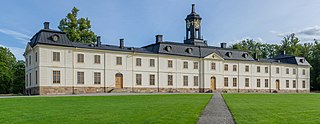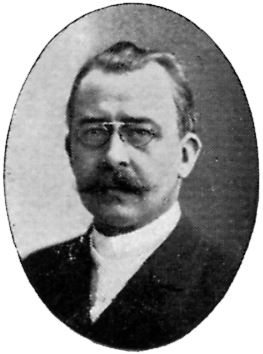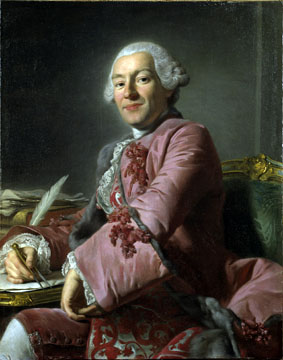
Storkyrkan, also called Stockholms domkyrka and Sankt Nikolai kyrka, is the oldest church in Stockholm. Storkyrkan lies in the centre of Stockholm in Gamla stan, between Stockholm Palace and Stortorget, the old main square of Stockholm. It was consecrated to Saint Nicholas in 1306 but construction of the church probably started in the 13th century. Inside, Storkyrkan still maintains much of its late medieval appearance in the form of a hall church with a vaulted ceiling supported by brick pillars. The exterior of the church is however uniformly Baroque in appearance, the result of extensive changes made in the 18th century. The church played an important role during the Reformation in Sweden as the place where Mass was celebrated in Swedish for the first time. It currently serves as the seat of the Bishop of Stockholm within the Church of Sweden since the creation of the Diocese of Stockholm in 1942.

Katarina kyrka is one of the major churches in central Stockholm, Sweden. The original building was constructed 1656–1695. It has been rebuilt twice after being destroyed by fires, the second time during the 1990s. The Katarina-Sofia borough is named after Katarina Parish and the neighbouring parish of Sofia.

Kungsträdgården is a park in central Stockholm, Sweden. It is colloquially known as Kungsan.

Ulriksdal Palace is a royal palace situated on the banks of the Edsviken in the Royal National City Park in Solna Municipality, 6 km north of Stockholm. It was originally called Jakobsdal for its owner Jacob De la Gardie, who had it built by architect Hans Jacob Kristler in 1638–1645 as a country retreat. He later passed on to his son, Magnus Gabriel De la Gardie, from whom it was purchased in 1669 by Queen Hedvig Eleonora of Sweden. The present design is mainly the work of architect Nicodemus Tessin the Elder and dates from the late 17th century.

Confidencen, or Ulriksdal Palace Theatre, is a theatre in the park of Ulriksdal Palace in Solna, in the Swedish capital Stockholm. Built in the 1750s and restored from the late 20th century, it is the oldest Rococo theatre in Sweden.

Maltesholm Castle is a large manor house located at Sönnarslöv in Kristianstad Municipality in Scania, Sweden.

Södra Bankohuset or Gamla Riksbanken is a building in Gamla stan, the old town of Stockholm, Sweden, together with Norra Bankohuset the location of the Bank of Sweden until 1906. Since December 2018, the building is housing Embark Studios, a Stockholm-based games studio.

Slottsbacken is a street in Gamla stan, the old town in central Stockholm, Sweden.

The German Church, sometimes called St. Gertrude's Church, is a church in Gamla stan, the old town in central Stockholm, Sweden, belonging to the German Saint Gertrude Parish of the Church of Sweden.

Karlberg Palace is a palace by the Karlberg Canal in Solna Municipality in Sweden, adjacent to Stockholm's Vasastaden district. The palace, built in 1630, today houses the Military Academy Karlberg.

Svartsjö Palace is a Rococo palace situated in Svartsjö on the island of Färingsö in lake Mälaren. It lies just outside of Stockholm.

Willem Boy was a Flemish painter, sculptor, and architect active in Sweden from around 1558 until his death.

The Church of Saint Mary Magdalene is a church on Södermalm in central Stockholm, Sweden, dedicated to and named for Jesus' companion Mary Magdalene.

Solna Church is a so-called round church in Solna Municipality near Stockholm, Sweden. It is part of Solna Parish in the Diocese of Stockholm. The church is located on the headland between Brunnsviken and Ulvsundasjön, at the southern end of the cemetery Norra begravningsplatsen. The oldest parts of the church are from the later 12th century, a Romanesque fortress church built in stone.

August "Agi" Lindegren was a Swedish architect and illustrator.

Saint Eugenia's Church is a Roman Catholic church in the center of Stockholm (Sweden). It was built in 1982 on plans of the Danish architect Jørgen Kjaergaard and is situated next to the former Royal Gardens, Kungsträdgården in Norrmalm. The Church is consecrated to Saint Eugenia, an abbess (700-735) of the monastery Mont Sainte-Odile in Alsace (France).

Carl Fredrik Adelcrantz was a Swedish architect and civil servant. Adelcrantz's style developed from a rococo influenced by Carl Hårleman, the leading architect in Sweden in the early years of his career, to a classical idiom influenced by the stylistic developments in France in the mid-to-late 18th century. As överintendent, he headed the royal and public building works from 1767 until his retirement in 1795.

Gustaf Vasa Church is a church located in the Vasastaden district of Stockholm, Sweden. Inaugurated in 1906 and named after 16th century King Gustav Vasa, it was designed by architect Agi Lindegren in the Baroque Revival style. Situated between two busy avenues partially lined with trees, its dome rises 60 metres (200 ft) above the nearby Odenplan plaza. The floor plan is in the shape of a Greek cross and seats 1,200 people, making it one of the largest churches in Stockholm.

The following outline is provided as an overview of and topical guide to Stockholm:

Katarina Parish is a parish in Södermalm's church district (kontrakt) in the Diocese of Stockholm, Sweden. The parish is located in Stockholm Municipality in Stockholm County. The parish forms its own pastorship.























